This post may contain affiliate links. Please read our disclosure policy.
Learn how to cook spaghetti squash three ways. Make it on the stovetop, in the oven, or use the microwave. Cut the spaghetti squash in half or slice it into rings. This adaptable veggie’s mild taste goes well with traditional pasta sauces, butter, and herbs. Or, serve cold in a salad.
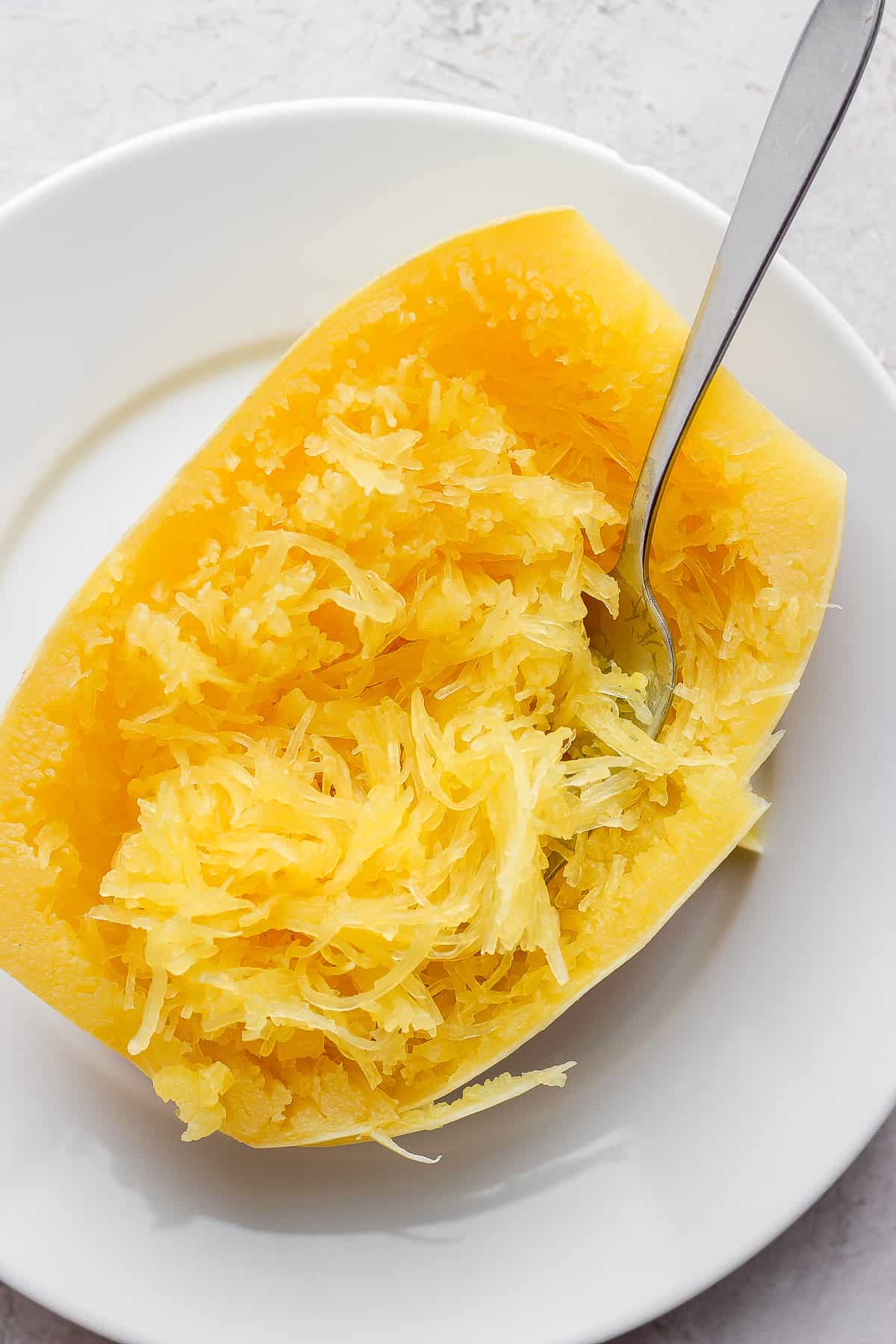
Low in calories and carbs but packed with fiber, spaghetti squash can be a great, gluten-free swap for traditional pasta.
How to cut spaghetti squash
Cutting spaghetti squash lengthwise
- Use a heavy, sharp knife and cut off the stem end.
- Take a small slice off bottom end, as well.
- Place the spaghetti squash on the cutting board with the wide cut side down. Slice the squash lengthwise from top to bottom.
- You will see a hollow full of seeds.
- Use a spoon to scrape out the seeds, being careful not to scoop too deeply into the edible flesh.
- Now you’re ready to cook the squash.

Cutting spaghetti squash widthwise
Cutting the squash widthwise and removing the seeds will give you much longer strands as the squash strands grow in a spiral from the bottom to the top.
- Use a heavy, sharp knife and cut off the stem end.
- Take a small slice off bottom end, as well.
- Hold the spaghetti squash longwise down. Start at one end and slice 1″ to 2″ rings.
- Keep the rings as even as possible.
- You’ll notice the rings will each have seeds in them.
- Use a spoon to scoop out the seeds from the rings’ middles and then cook the rings.
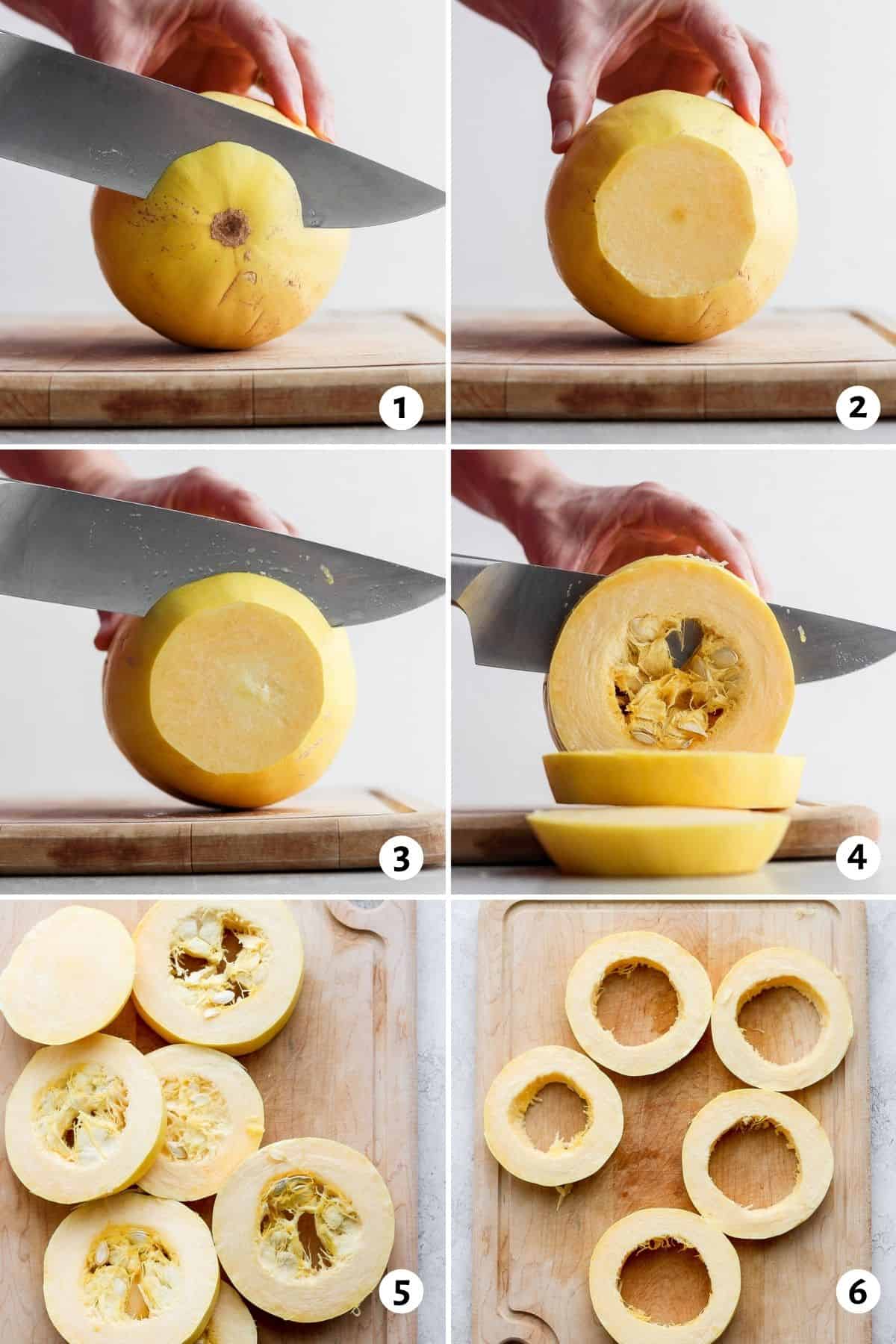
how to cook spaghetti squash
cooking squash in microwave
- Find a microwave safe dish, preferably one with a cover, that will hold the squash. Add about 1/2″ of water into the dish, then place the squash in top side town. (If you have a large squash or are using squash rings, work in batches.)
- Cover and cook until very tender and soft. Test by piercing with a knife. Rake up the squash strands and use as desired.
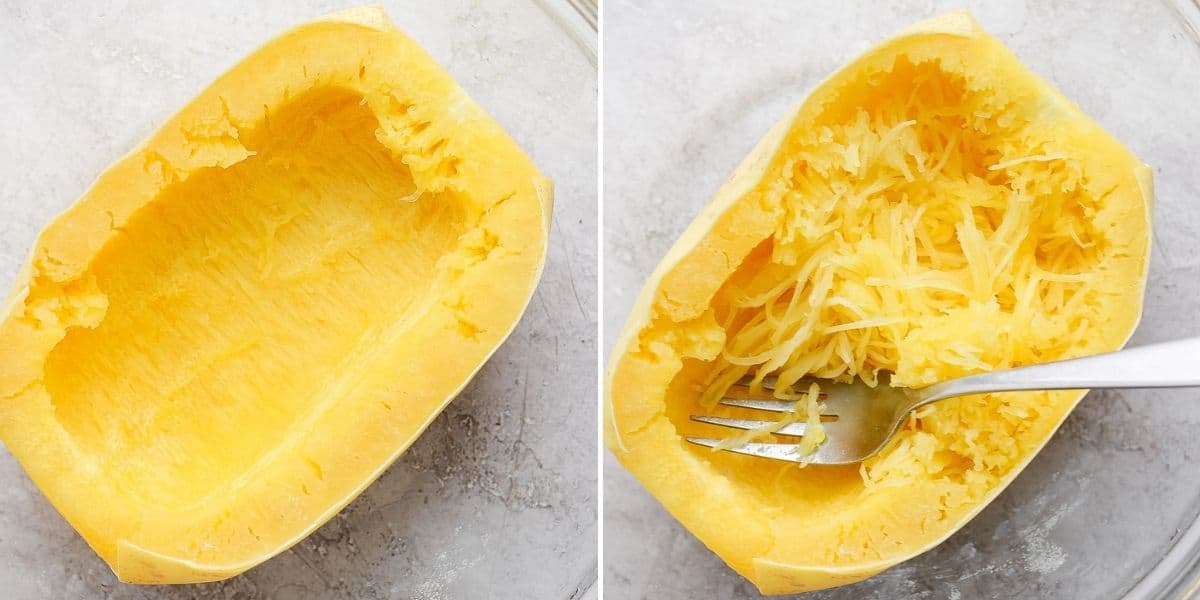
cooking SPAGHETTI SQUASH On THE stovetop
- Place the squash in a pot large enough to hold it, cover with water, add about two tablespoons of salt, and bring to a boil. (This can work with squash halves or rings.)
- Simmer and cook until tender. Then strain and drain well. Allow to cool a bit before removing the squash from the rind.
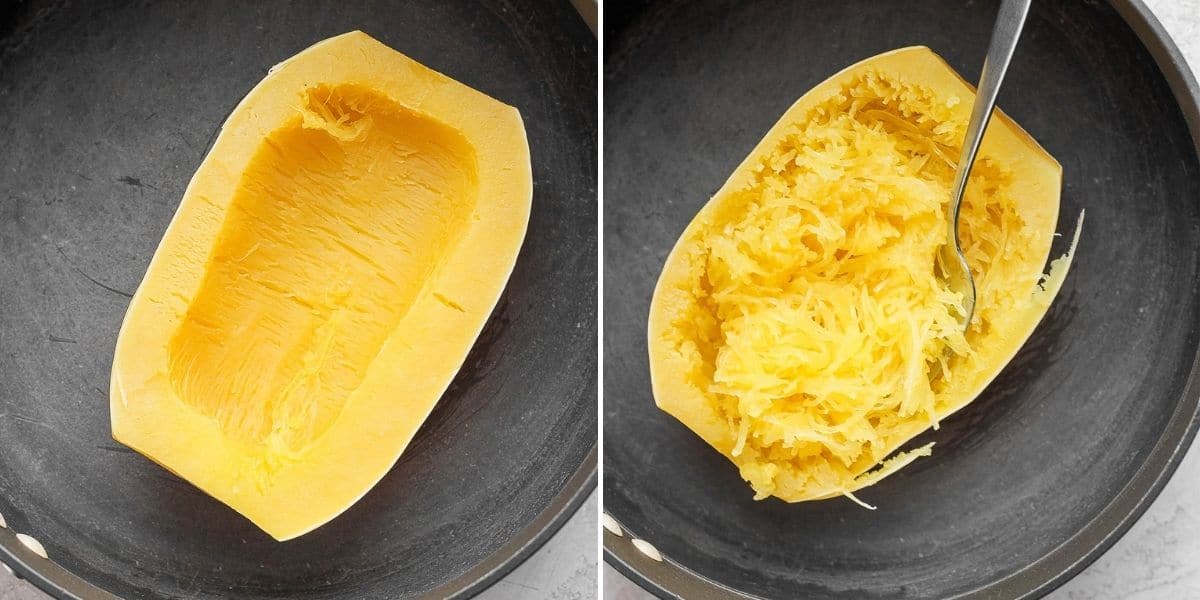
Roasting Spaghetti squash halves in oven
- Brush olive oil on the squash, sprinkle with salt and place the squash cut side down on the pan.
- Roast in the oven until tender. Carefully pressing the skin of the squash to test for doneness.
- Let stand until cool enough to handle. Then flip over and shred the inside with two forks.
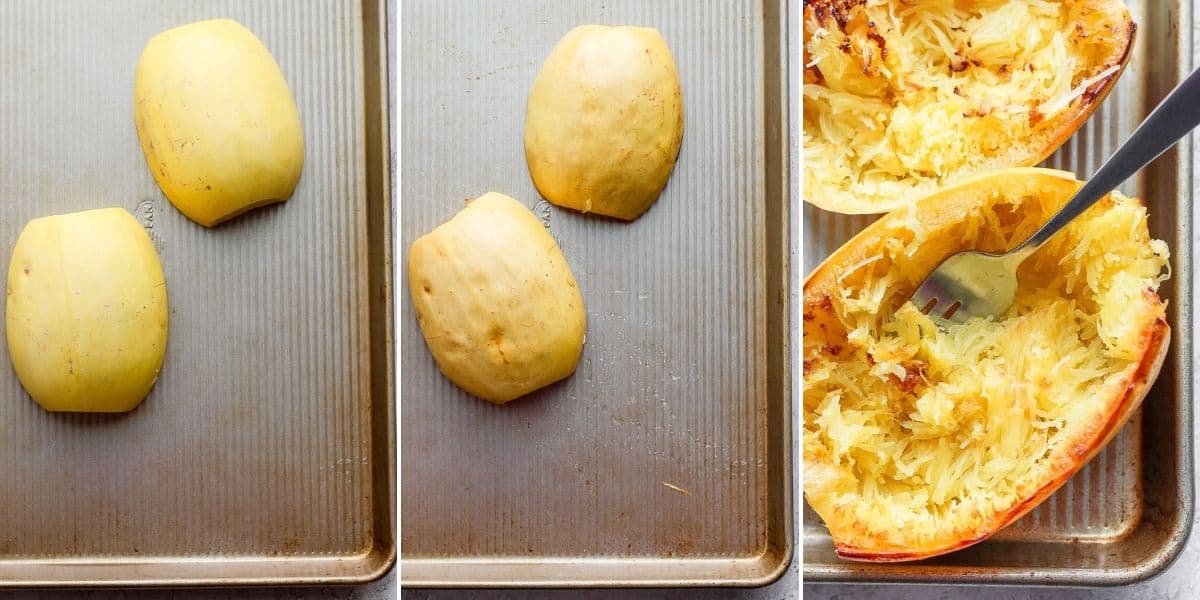
cooking squash rings in oven
- While you can cook rings in the microwave or on the stovetop, baking in the oven is the most popular. Brush olive oil on both sides of the rings, and place in the pan with space between each.
- Roast in the oven until tender.
- Finally, pull the squash strands apart with a fork.
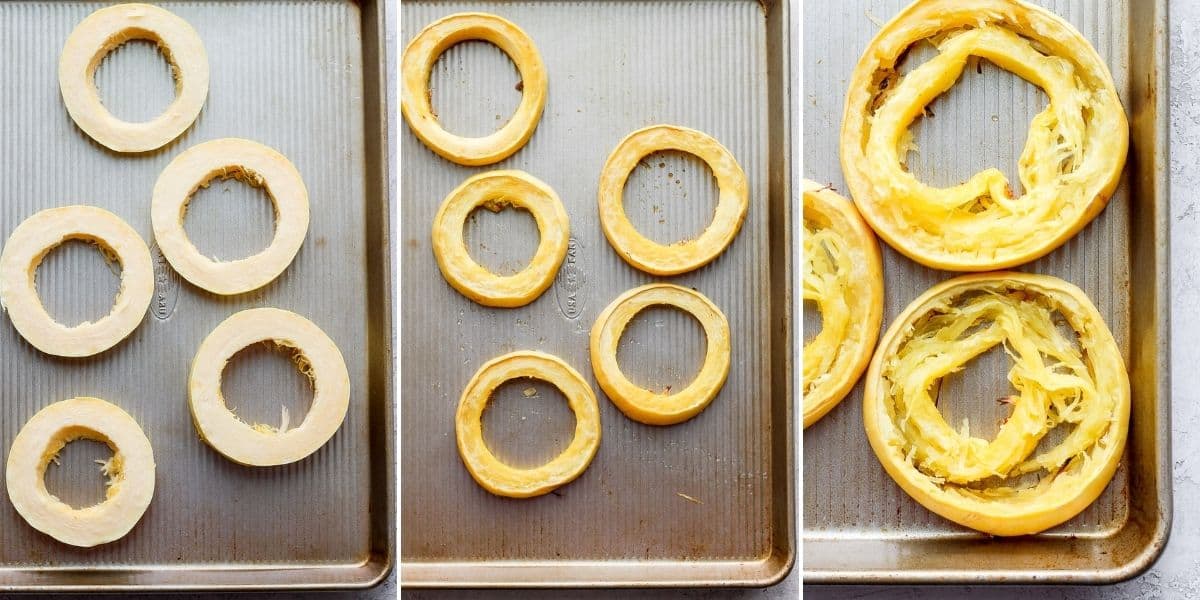
Recipes with spaghetti squash
- Spaghetti Squash Lasagna
- Cheesy Garlic Parm Spaghetti Squash
- Spaghetti Squash with Meat Ragu
- Chicken Parmesan Spaghetti Squash
- Pesto Spaghetti Squash
- Spaghetti Squash Alfredo
Frequently asked questions
Spaghetti squash is best enjoyed shortly after cooking unless you want to take an extra step: Put the strands in a colander with a bowl beneath it and drain overnight in the refrigerator. Package drained squash in an airtight container and freeze.
Thanks to its mild flavor, you can sub spaghetti squash for regular pasta. Try it with all types of marinara or pesto. Or simply toss with butter, herbs – like oregano or sage – and sprinkle with parmesan cheese.
Let the spaghetti sauce cool (or cool and drain as in directions for freezing.) And then, toss with any vinaigrette or add to a favorite salad. Again, its mild flavor makes it ideal with almost any flavor profile you want to make with it!
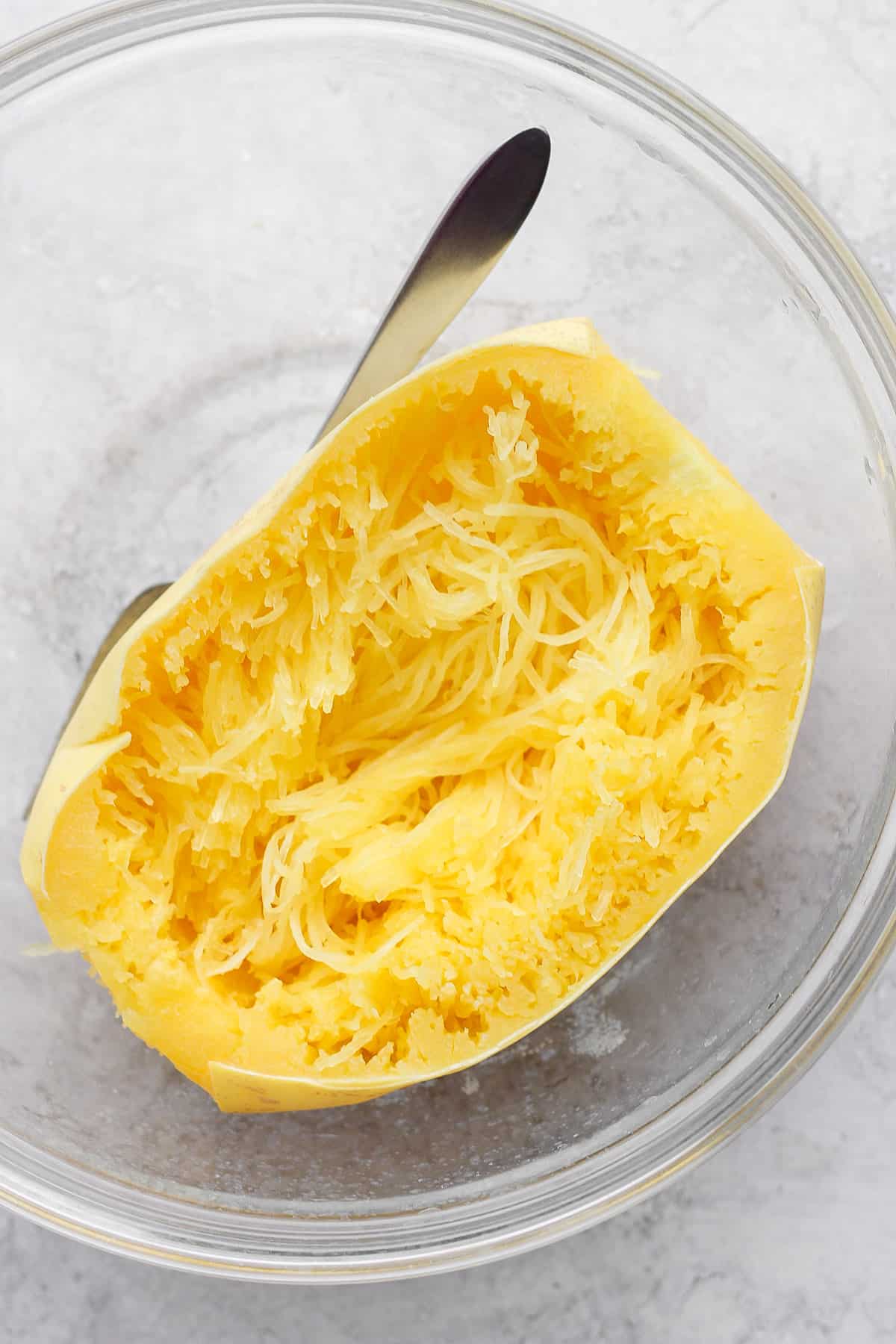
Spaghetti squash offers a delicious and unprocessed substitute for pasta, and small kitchen helpers love the magic of turning a gourd into long strands. Yields will vary by squash but expect around one cup of “spaghetti” per pound of squash.
MORE COOKING TUTORIALS:
- How to Cook Artichokes
- How to Cook Asparagus
- How to Cook Couscous
- How to Cook Cauliflower Rice
- How to Cook Quinoa
- How to Cook Brown Rice
- How to Cook Pasta
If you find this cooking resource for How to Cook Spaghetti Squash helpful or if you try any Feel Good Foodie recipe, then don’t forget to rate the recipe and leave a comment below! It helps others who are thinking of trying out this tutorial and we would love to hear about your experience. And if you snapped some shots, share it on Instagram so we can repost on Stories!

How to Cook Spaghetti Squash
Video
Instructions
Cut the Spaghetti Squash
- Use a large sharp knife to cut off the stem and bottom edges of the spaghetti squash.
- To cut lengthwise: Place the spaghetti squash on a cutting board with the wide cut side down. Slice the spaghetti squash in half lengthwise from the top to the bottom.
- To cut widthwise: Place the spaghetti squash on a cutting board and slice 1-2 inch rings all the way across the spaghetti squash, keeping the rings as even as possible.
- Use a spoon to scrape out the seeds and discard.
- Cook the Spaghetti Squash
Microwave Instructions
- In a microwave safe dish that will hold the squash (you may need to do one at a time), place about a ½ inch of water followed by the squash, cut side down.
- Cover and cook until very tender, about 10 minutes. Pull the squash strands apart with a fork. Serve with olive oil and salt.
Stovetop Instructions
- Place the squash in a pot large enough to hold it, cover with water, add about two tablespoons of salt and bring to a boil.
- Reduce heat to a simmer, cook for 15-18 minutes, strain and let drain well and steam out before removing the squash from the rind. Serve with olive oil and salt.
Oven Instructions for Squash Boats
- Preheat oven to 400°F with a baking pan inside.
- Carefully remove the pan from the oven. Brush the olive oil on the squash and sprinkle with salt. Place the squash cut side down on the pan.
- Roast in the oven until tender, about 35-45 minutes. Carefully press the skin of the squash to test for doneness.
- Let stand until able to handle, about 10 minutes. Then flip the squash over and shred the inside with two forks.
Oven Instructions for Squash Rings
- Preheat oven to 400°F with a baking pan inside.
- Carefully place the squash rings on the baking pan with space between each. Brush the tops of squash with olive oil and sprinkle salt.
- Roast in the oven until tender, about 30-40 minutes. Pull the squash strands apart with a fork.
Notes
Nutrition
Nutrition information provided is an estimate. It will vary based on cooking method and specific ingredients used.
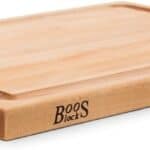

Thanks for a great tutorial, Yumna. I didn’t know that spaghetti squash grew in a spiral, how wonderful is that! A few questions: Can the rind be eaten? Can the rind be used in broth, stock, soup?
You’re welcome! I would not recommend eating the skin of the spaghetti squash.